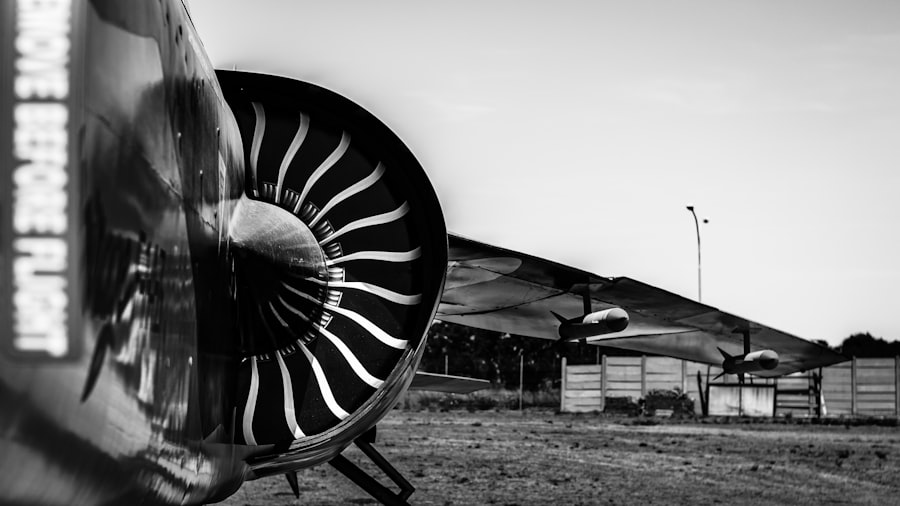The Aerospace Industries Association (AIA) serves as a pivotal organization within the aerospace sector, representing the interests of manufacturers and suppliers in the aviation, space, and defense industries. Established in 1919, AIA has been instrumental in advocating for policies that foster innovation, competitiveness, and sustainability in aerospace. The association’s mission extends beyond mere representation; it aims to enhance the industry’s overall health by promoting collaboration among its members and engaging with government entities to shape regulations that impact the sector.
AIA’s influence is felt not only in the United States but also globally, as it works to ensure that the aerospace industry remains a cornerstone of economic growth and technological advancement. AIA’s membership encompasses a diverse array of companies, from large multinational corporations to small and medium-sized enterprises. This broad representation allows AIA to address a wide range of issues affecting the industry, including workforce development, research and development funding, and international trade policies.
By fostering a collaborative environment among its members, AIA plays a crucial role in driving innovation and ensuring that the aerospace sector remains competitive on the world stage. The association’s commitment to promoting best practices and sharing knowledge among its members further solidifies its position as a leader in the aerospace community.
Key Takeaways
- Aerospace Industries Association (AIA) is a trade association representing the aerospace and defense industry in the United States.
- The aerospace industry has evolved significantly since its inception, with advancements in technology and innovation driving its growth.
- AIA plays a crucial role in shaping aviation policies, regulations, and standards to ensure the industry’s safety and competitiveness.
- Key players and members of AIA include major aerospace and defense companies, as well as suppliers and service providers.
- Advancements in aerospace technology, such as unmanned aerial vehicles and space exploration, are shaping the future of aviation.
History and Evolution of the Aerospace Industry
The aerospace industry has undergone significant transformations since its inception in the early 20th century. The Wright brothers’ first powered flight in 1903 marked the beginning of a new era in transportation, leading to rapid advancements in aviation technology. By the end of World War I, military aviation had gained prominence, prompting governments to invest heavily in aircraft development.
The post-war period saw the emergence of commercial aviation, with airlines beginning to offer passenger services, thus laying the groundwork for a burgeoning industry. As the decades progressed, the aerospace sector experienced remarkable growth driven by technological advancements and increased demand for air travel. The introduction of jet engines in the 1950s revolutionized commercial aviation, drastically reducing travel times and making air travel more accessible to the general public.
Concurrently, the space race between the United States and the Soviet Union spurred unprecedented investments in aerospace technology, culminating in landmark achievements such as the launch of Sputnik in 1957 and the Apollo moon landing in 1969. These milestones not only showcased human ingenuity but also established aerospace as a critical field for national security and scientific exploration.
The Role of Aerospace Industries Association in Shaping Aviation

The Aerospace Industries Association plays a vital role in shaping the future of aviation through its advocacy efforts and policy initiatives. By engaging with lawmakers and regulatory bodies, AIA ensures that the interests of its members are represented in discussions surrounding critical issues such as safety regulations, environmental standards, and funding for research and development. The association’s ability to influence policy decisions is rooted in its extensive knowledge of the industry and its commitment to fostering a collaborative environment among stakeholders.
In addition to advocacy, AIA actively promotes initiatives aimed at enhancing workforce development within the aerospace sector. Recognizing that a skilled workforce is essential for maintaining competitiveness, AIA collaborates with educational institutions and training organizations to develop programs that equip individuals with the necessary skills for careers in aerospace. This focus on workforce development not only addresses current labor shortages but also prepares the next generation of professionals to meet the evolving demands of the industry.
Key Players and Members of Aerospace Industries Association
| Name | Position | Company |
|---|---|---|
| Eric K. Fanning | President and CEO | Aerospace Industries Association |
| David F. Melcher | Former President and CEO | Aerospace Industries Association |
| John L. Garrison | Chairman of the Board | Aerospace Industries Association |
| Marillyn A. Hewson | Former Chairman of the Board | Aerospace Industries Association |
AIA’s membership includes some of the most prominent companies in the aerospace sector, ranging from major defense contractors to innovative startups. Notable members include Boeing, Lockheed Martin, Northrop Grumman, and Raytheon Technologies, each contributing significantly to advancements in aviation technology and defense capabilities. These companies play a crucial role in shaping industry standards and driving innovation through their research and development efforts.
In addition to large corporations, AIA also represents a diverse array of small and medium-sized enterprises (SMEs) that contribute to various aspects of aerospace manufacturing and services. These SMEs often specialize in niche markets or provide essential components that support larger systems. By including these smaller players within its membership, AIA ensures that their voices are heard and that their contributions to the industry are recognized.
This inclusivity fosters a sense of community within the aerospace sector, encouraging collaboration and knowledge sharing among all members.
Advancements and Innovations in Aerospace Technology
The aerospace industry is characterized by its relentless pursuit of innovation, driven by advancements in technology that enhance safety, efficiency, and sustainability. Recent developments include the integration of artificial intelligence (AI) and machine learning into aircraft systems, enabling more efficient flight operations and improved maintenance practices. For instance, predictive maintenance powered by AI algorithms allows airlines to anticipate equipment failures before they occur, reducing downtime and operational costs.
Another significant advancement is the ongoing research into sustainable aviation fuels (SAFs) aimed at reducing carbon emissions from air travel. Companies are investing heavily in developing biofuels derived from renewable resources, which can significantly lower the environmental impact of aviation. Additionally, electric propulsion systems are being explored as a means to further reduce emissions and noise pollution associated with traditional jet engines.
These innovations not only address environmental concerns but also position the aerospace industry as a leader in sustainable practices.
Challenges and Opportunities for the Future of Aviation

Despite its many advancements, the aerospace industry faces several challenges that could impact its future trajectory. One pressing issue is the need for regulatory frameworks that keep pace with technological innovations. As new technologies emerge, such as autonomous aircraft and urban air mobility solutions, regulatory bodies must adapt existing regulations or create new ones to ensure safety while fostering innovation.
This balancing act presents both challenges and opportunities for industry stakeholders. Moreover, workforce shortages pose a significant challenge for the aerospace sector as it seeks to expand its capabilities. The aging workforce combined with a lack of interest among younger generations in pursuing careers in aerospace has created a talent gap that could hinder future growth.
However, this challenge also presents an opportunity for AIA and its members to invest in outreach programs aimed at inspiring young people to consider careers in aviation and engineering fields. By promoting STEM education and providing mentorship opportunities, the industry can cultivate a new generation of skilled professionals ready to tackle future challenges.
Collaborations and Partnerships within the Aerospace Industry
Collaboration is essential for driving innovation within the aerospace sector, as it allows companies to pool resources, share knowledge, and accelerate technological advancements. AIA facilitates partnerships among its members through various initiatives aimed at fostering collaboration across different segments of the industry. For example, joint ventures between major manufacturers and smaller suppliers can lead to breakthroughs in materials science or manufacturing processes that benefit all parties involved.
Additionally, partnerships between industry stakeholders and government agencies play a crucial role in advancing research initiatives. Collaborative efforts such as public-private partnerships enable access to funding for large-scale projects that might otherwise be financially unfeasible for individual companies. These collaborations not only enhance technological capabilities but also strengthen national security by ensuring that critical defense technologies are developed efficiently.
The Impact of Aerospace Industries Association on the Global Aviation Sector
The Aerospace Industries Association has made significant contributions to shaping not only the U.S. aerospace landscape but also influencing global aviation practices. Through its advocacy efforts at international forums such as the International Civil Aviation Organization (ICAO) and partnerships with foreign aerospace associations, AIA promotes best practices that enhance safety standards and operational efficiency worldwide.
Moreover, AIA’s commitment to sustainability resonates on a global scale as countries strive to meet international climate goals. By championing initiatives related to sustainable aviation fuels and emissions reduction technologies, AIA positions its members as leaders in addressing global environmental challenges associated with air travel. This proactive approach not only enhances the reputation of U.S.-based aerospace companies but also sets a benchmark for other nations striving for similar advancements.
In conclusion, AIA’s multifaceted role within the aerospace industry underscores its importance as a catalyst for innovation, collaboration, and advocacy. As it continues to navigate challenges while seizing opportunities for growth, AIA remains at the forefront of shaping a sustainable future for aviation on both national and global stages.


